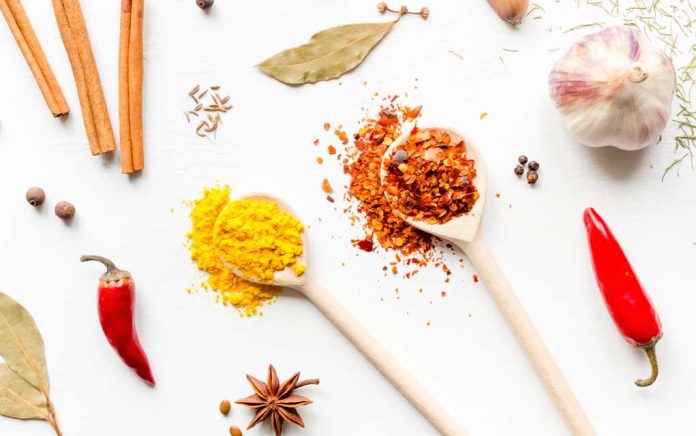
Last year I was invited to an editor's summit in New Mexico hosted by Heel Inc. While out for dinner one night, I was sitting next to two people I had just met hours earlier, Suzy and Sam Cohen (Suzy is America's Pharmacist and a best selling author and Sam is her amazing husband, a chiropractor and president of her company). The waiter took our orders, and when my meal arrived I reached into my purse and pulled out a tiny salt shaker that I carry around with me because I refuse to eat bleached white table salt. My salt shaker had high quality, air-dried sea salt which contained 75+ minerals. When I looked over at Suzy, she had a huge smile on her face, and not a moment later, pulled out her own tiny salt shaker that contained the same salt as mine! As you can imagine, we became instant friends.
Although salt is technically not a spice, but rather a mineral, it's still something we add to food to improve its taste. I'm very picky about the salt and spices I add to my food. Like salt, spices are used to provide and enhance flavor in the food we eat. Many of us use spices in place of salt to reduce our salt intake. I learned a long time ago that spices were at the top of the list of foods we should choose to eat organic because of their high concentration of pesticides. However, as if pesticides weren't enough of a reason to buy organic spices, I recently learned that there are others reasons to buy organic spices as well.
According to Thomas Fricke, co-founder and president of ForesTrade, an organic spice company in Brattleboro, Vermont, "Virtually all conventional spices sold in the United States are fumigated [sterilized] with hazardous chemicals that are banned in Europe."
Why am I not surprised?!
Sterilizing Spices with Toxic Chemicals and Radiation
When spices come in from the fields to be dried, they can be contaminated with all sorts of junk, like insects, mold, yeasts, and pathogens like salmonella. It’s for this reason that conventional spice producers choose to sterilize their spices with toxic chemicals. One particularly scary sterilizing agent used is called ethylene oxide, a gas that can leave behind a residue that’s carcinogenic.
And then there’s irradiation, which was approved for use on spices in 1983. This is another method for killing bacteria and food borne illnesses like salmonella. Foods are irradiated by being passed through a radiation chamber on a conveyor belt. The spices actually pass through a radiation beam. Spices are currently regulated by the FDA for the highest allowable radiation amounts of any food.
Because harmful chemicals and irradiation are not allowed to be used for certified organic products, organic spice companies, on the other hand, use steam to sterilize their spices rather than toxic chemicals or radiation.
Yet another reason to choose organic over conventional.
Fillers, Preservatives, and GMOS
Conventional spices can also include fillers so they end up being far more than just the initial dried spice that you thought you were getting. It’s cheaper to use less spice and more cheap fillers like GMO corn. Here are some of the fillers in conventional spices:
- Artificial colors
- Artificial flavors
- Anti-caking agents that keep them from clumping together.
- Soy and corn derivatives that are likely GMO because both soy and corn are on the Big Eight List of GMO Foods.
Read more about artificial colors
How to Buy Healthy Spices
- Buy organic whenever possible to avoid irradiation (which is banned in USDA certified organic foods) as well as pesticides and chemical sterilizing agents.
- Buy spices as you need them as they lose their zing after a certain period of time so buying them in smaller amounts enables you to use them up before they go bland.
- Buy spices in smaller amounts.I personally prefer to buy the spices I use on a regular basis in bulk (like oregano, rosemary, and basil), and the ones I don't use as often, or haven't yet experimented with, in smaller amounts (so I'm not left with a huge amount if I don't end up using much of them).




